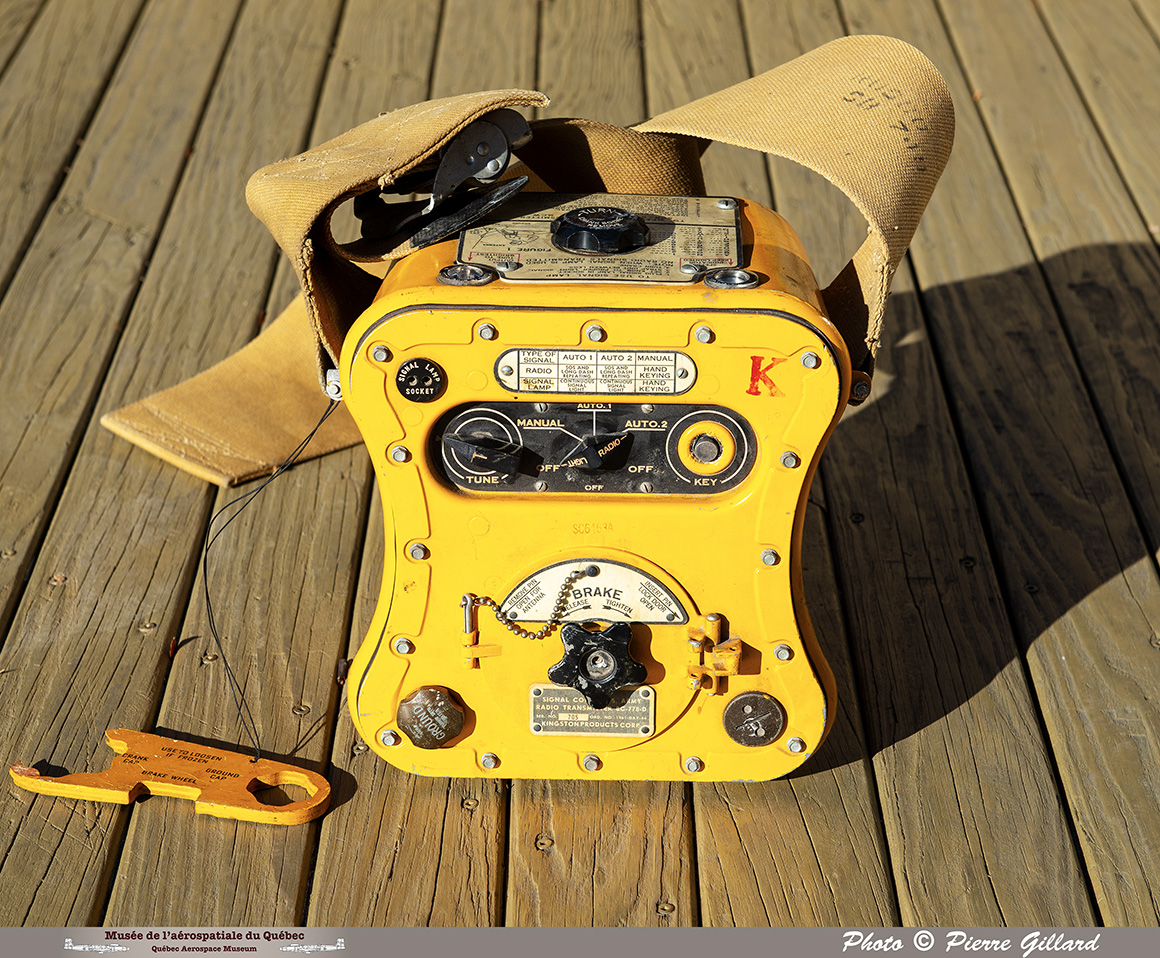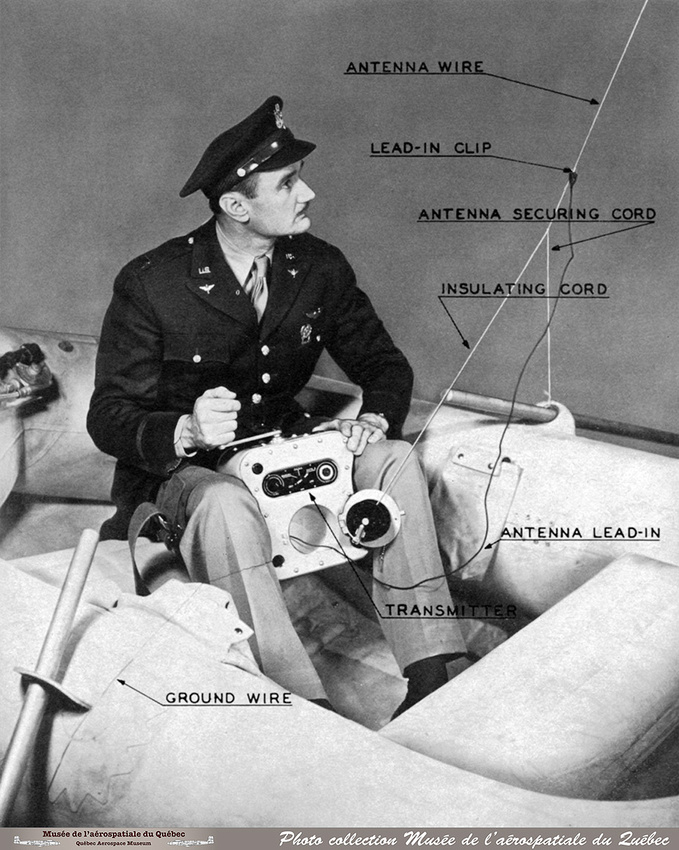BC-778-D "Gibson Girl"
| Kingston Products Corporation Radio Transmitter BC-778-D "Gibson Girl" |
|

|
The BC-778-D emergency beacon is commonly referred to as the "Gibson Girl". This nickname comes from its particular shape intended to be placed comfortably between the two legs of a survivor seated in a life raft. The strap allows the beacon to be taken in place.
This equipment was manufactured by the Kingston Products Corporation of Kokomo, Indiana from the end of World War II. Its design was very largely inspired by the German Notsender NS2, of which the British had recovered some specimens in 1941 and had ceded some to the Americans.
The BC-778-D radio transmitter was part of the SCR-578 set and operated at medium frequencies (MF) at 500 kHz. Its power was 4.8 watts and the range of the emission could reach 300 km thanks to a wire antenna suspended from a small helium balloon or a kite.
It could automatically transmit the corresponding morse code to "SOS"; or a manually coded Morse code message. Its power supply was carried out using a crank activated by the operator.

Its successor, the AN/CRT-3, is very similar and also emit a high frequency (HF) signal at 8.364 MHz. It remained in service until the 1970s. In a way, we can therefore say that the BC-778-D and AN/CRT-3 were the ancestors of modern ELT and GADSS distress beacons.
The BC-778-D emergency transmitter of the QAM is kindly loaned on a long-term basis by our member Guy Lapierre.
Photos.
|
|
TOP OF PAGE
Last update : 11-12-2023.
© Pierre GILLARD & Pierre MÉNARD